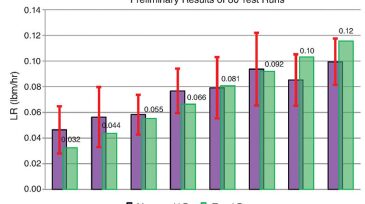Safety
This study ascertains the capital expenditure and operating expenditure associated with the reuse of existing facilities, specifically regarding a carbon capture and storage project being prepared in South Korea.
Sponsored
Advance your career with the new Pipeline Engineering Program at the Technical University of Leoben, a 5-month course combining on-campus and online learning, integrating industry expertise, engineering practice, and future-ready skills for professionals in oil, gas, and emerging energy systems.
A resilience-based approach to safety was the focus of a panel of experts at the 2025 SPE Annual Technical Conference and Exhibition in Houston.
-
The engineering and operational planning to ensure that no uncontrolled hydrocarbon releases occur during the execution of subsea big-bore gas wells are described.
-
Studies show that almost 65% of megaprojects fail to meet the performance goals established when the financial go-ahead was given. Operators can avoid costly pitfalls if they focus on addressing the human-related problems.
-
Past experiences with problematic situations often drive the decision-making process, and while experience may be helpful, it can also lead to the development of biases that hamper an organization’s ability to manage dynamic environments such as unconventional projects.
-
The compact nature of offshore platforms makes the management of the exhaust from engines a concern from a health and safety standpoint. In this paper, the authors present a typical plume-impingement problem aboard an offshore platform and discuss the application of plume-cooling technology.
-
Helicopter operations are important in the offshore industry but accidents involving them can have fatal consequences. This paper focuses on risk mitigation during the loading/unloading task of a slickline/wireline job from various viewpoints, including the psychological aspects of the crew.
-
Virtual reality technology has become a powerful training tool for companies looking to recreate real-life, on-the-job oil industry scenarios.
-
The deepwater industry uses technology qualification (TQ) as a tool to determine which safety barriers are needed, and what level of testing is required. Even without failure data from the field, a method has been developed to quantify the integrity of various components.
-
This paper presents a multiple-physical-barrier (MPB) approach to operational risk management by focusing on physical barriers and success paths that enable each barrier to perform its safety functions.
-
Optical gas-imaging is effective for visual identification of volatile organic compound (VOC) leaks. But it doesn't currently quantify the leak rate as required by regulations. This paper discusses work aimed at adding that quantification.
-
Risk-taking behavior is an important contributing human factor to incidents and is notoriously difficult to influence. This study examined how safety measures and uncertainty affected the risk-taking behavior of participants.













